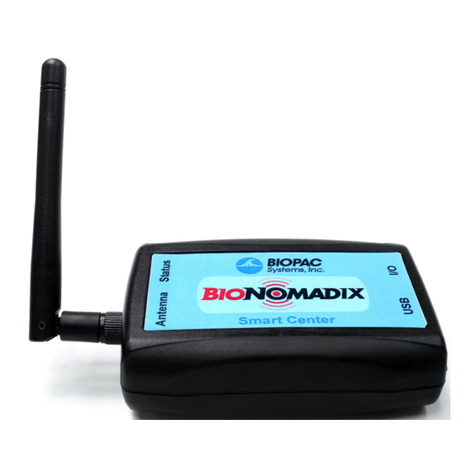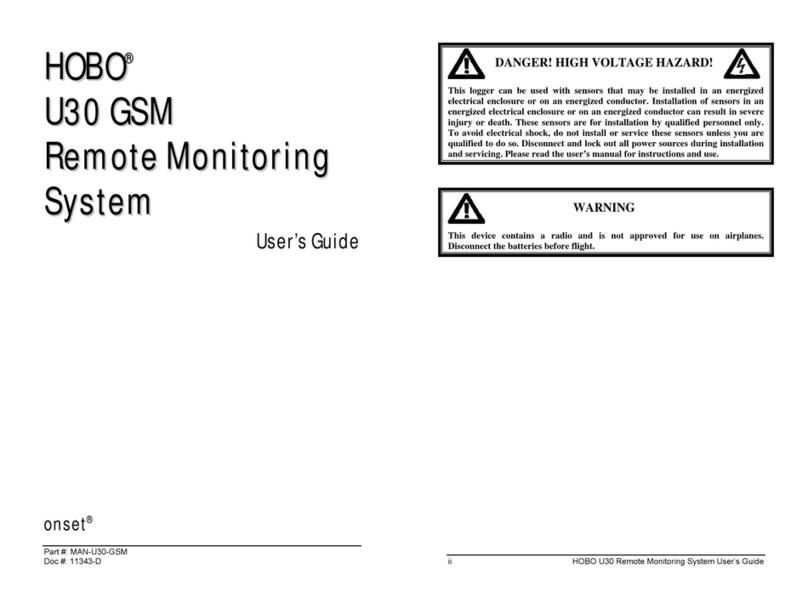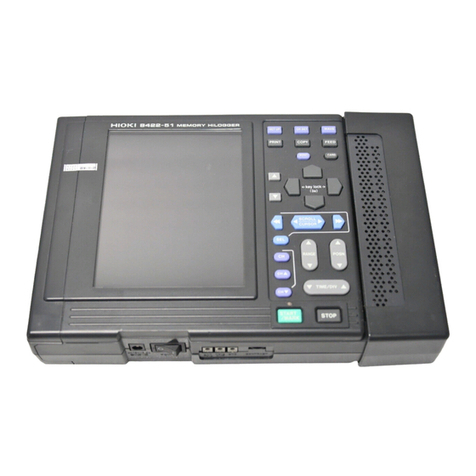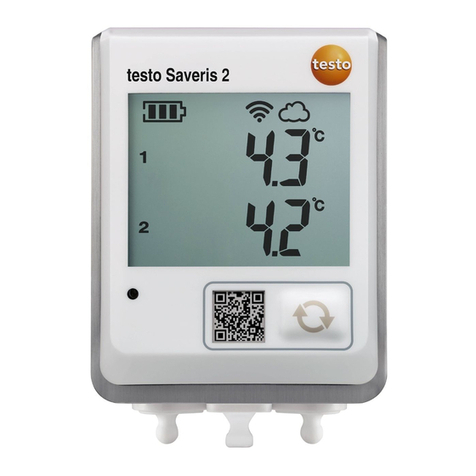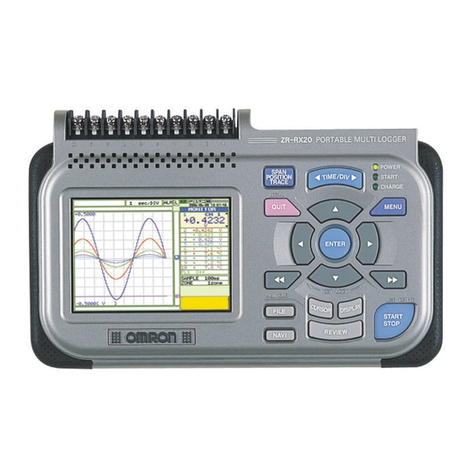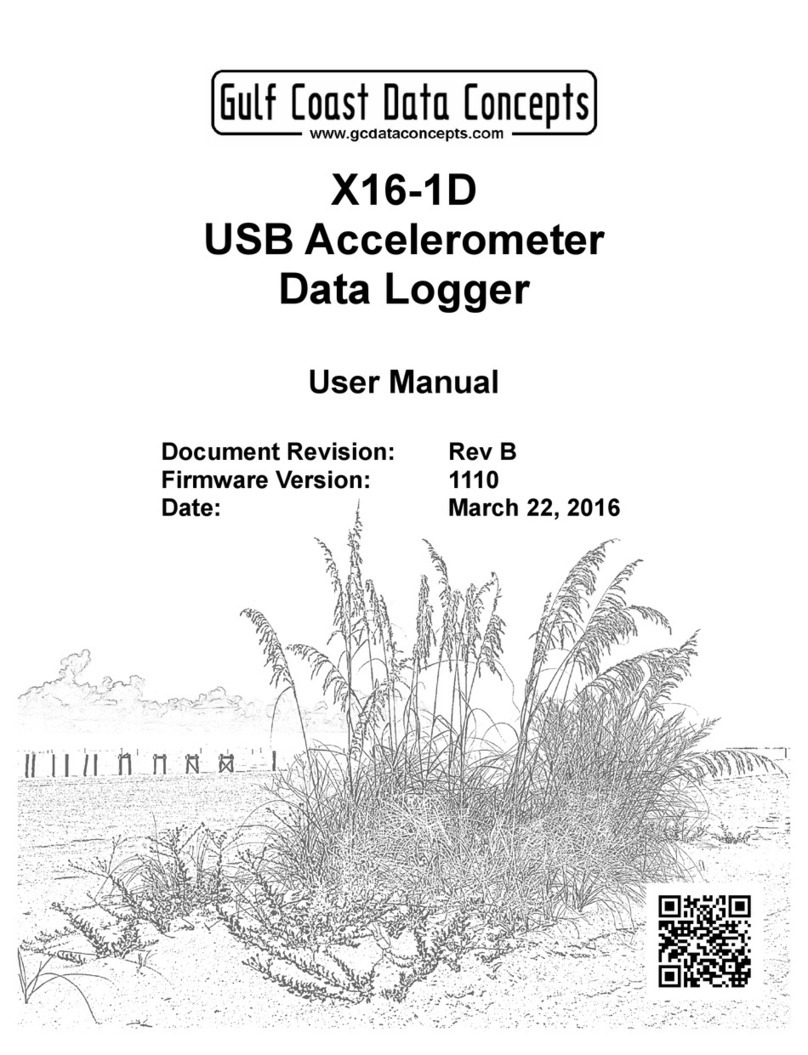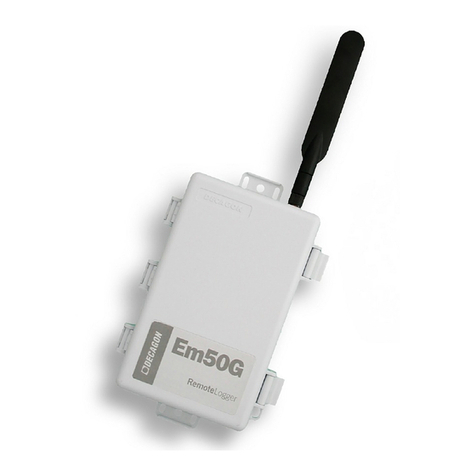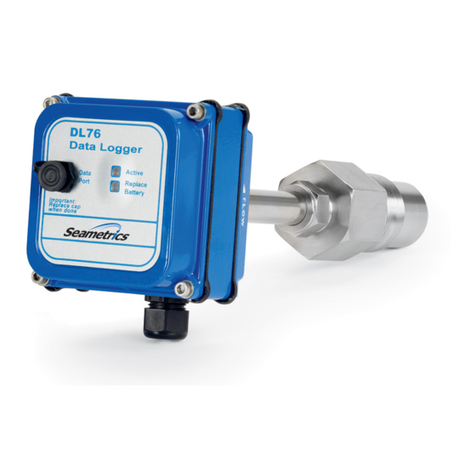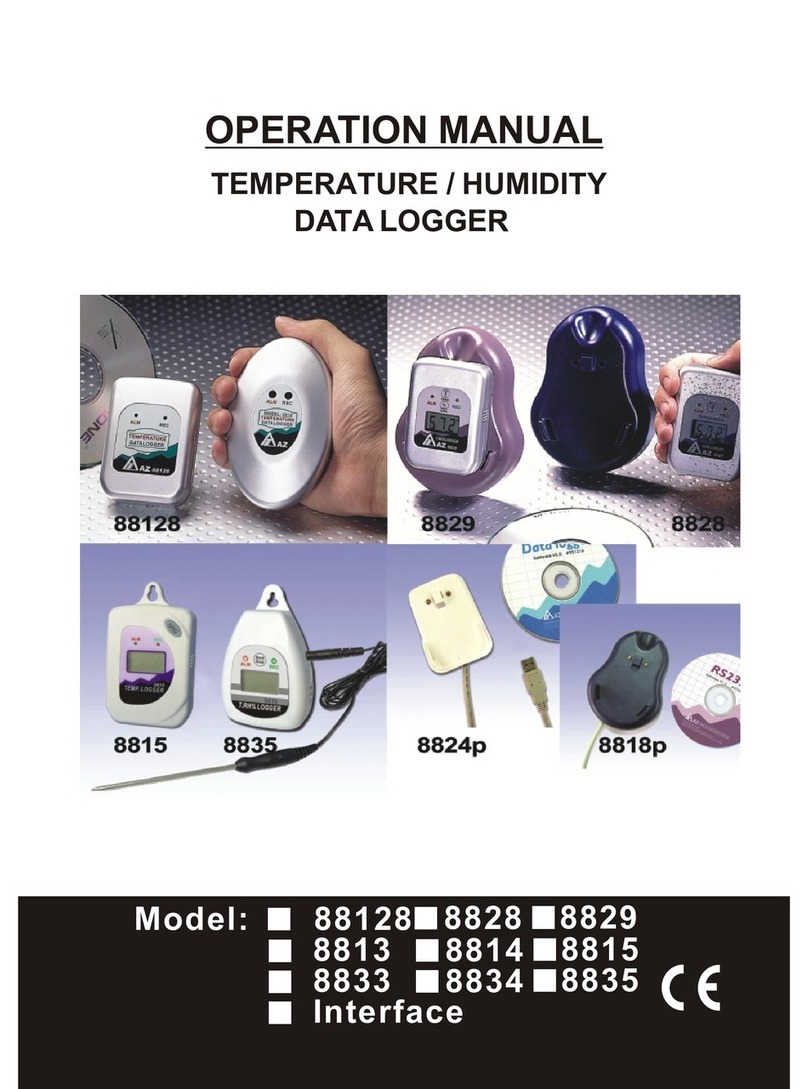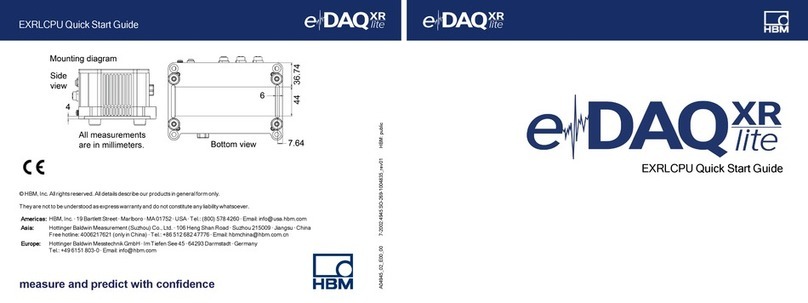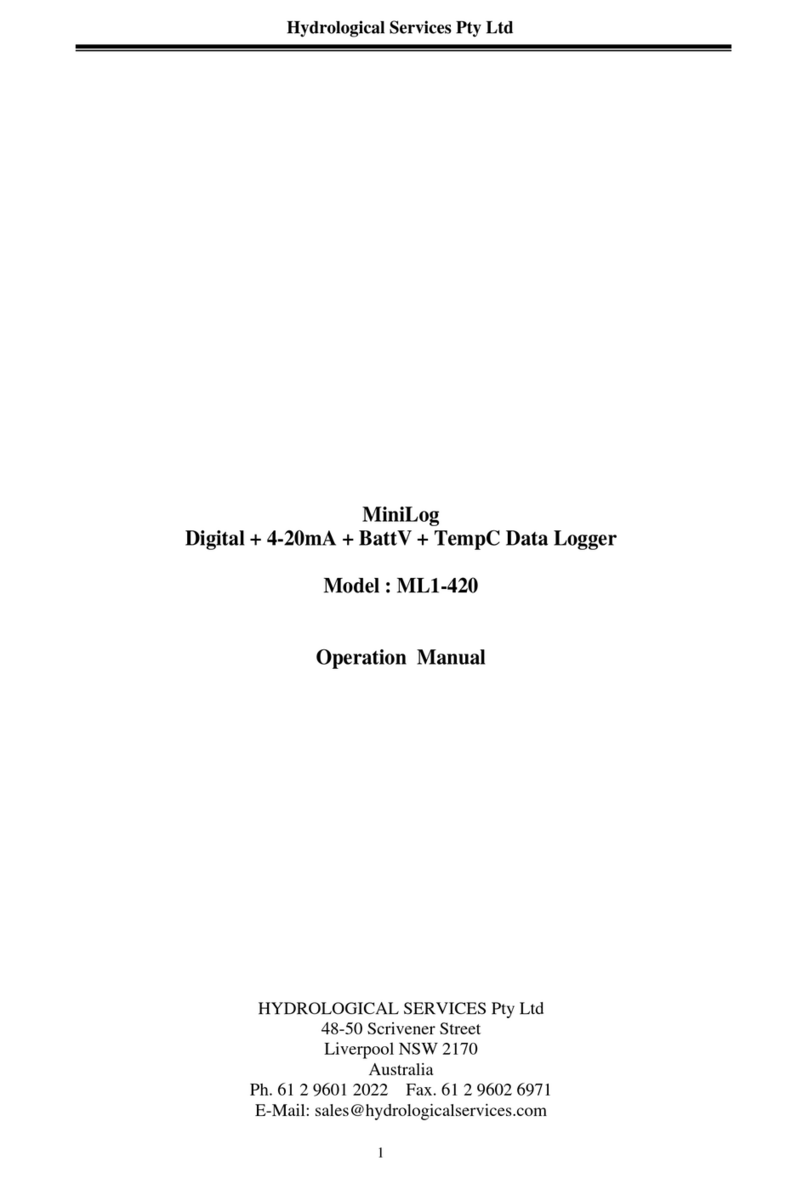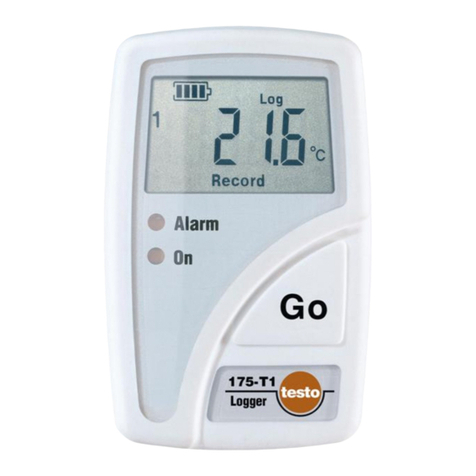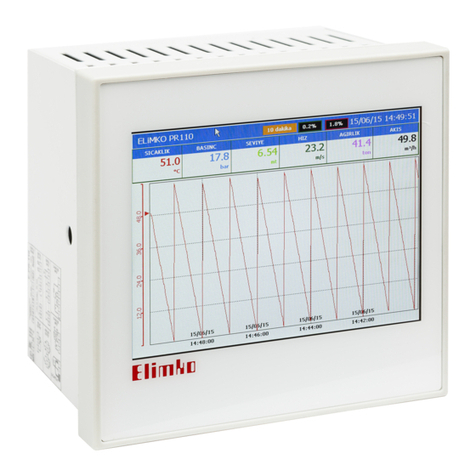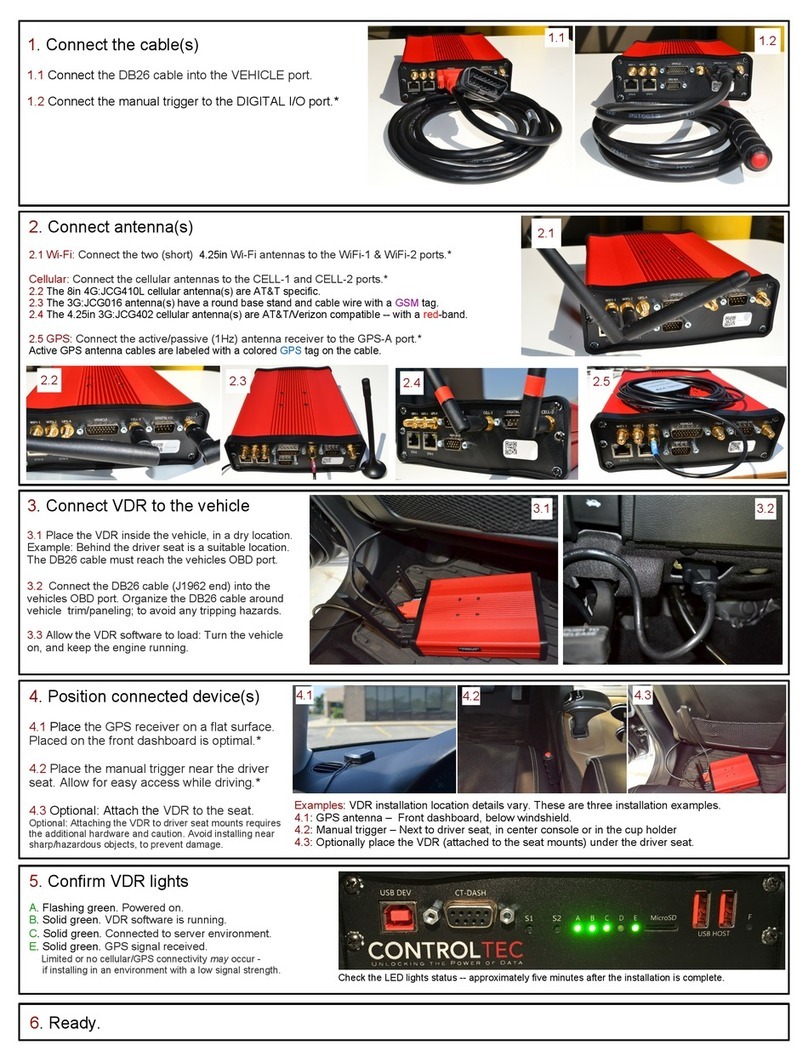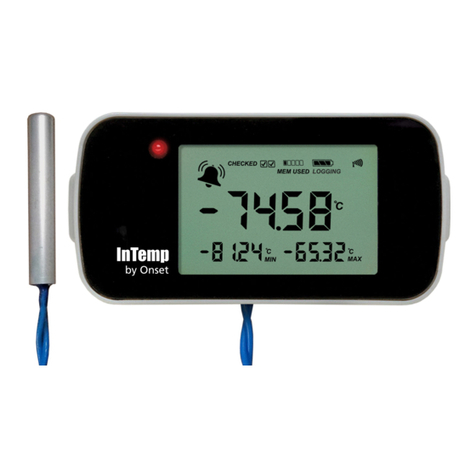BIOPAC Systems MP36 Installation instructions

01.06.2014
BSL HARDWARE GUIDE
The BSL Hardware Guide describes how to connect and setup various signal electrodes, transducers and other devices
for use with the Biopac Student Lab System using an MP acquisition unit and includes sections that detail different
applications and uses for the Biopac Student Lab PRO System.

info@biopac.com
www.biopac.com
BIOPAC Hardware | MP36/35/45 | Page 1 - 11 Updated: 12.23.2013
MP ACQUISITION UNITS
MP36/35 Four Channel Data Acquisition System
MP45 Two Channel Data Acquisition System
This document covers the following information for the MP36/MP35/MP45 Data Acquisition Systems:
Symbols – page 1
Compliance/Safety – page 1
Input devices/Sensor Connections – pages 1-2
Front and Back Panels – pages 2-4
Specifications – page 5
Pin-Out Diagrams – page 6
BSL System Core Packages – page 7
Lesson Hardware Guide – page 8
BSL Lesson Descriptions – pages 9-11
The MP data acquisition unit is the heart of all Core Packages. The MP Unit has an internal microprocessor to
control data acquisition and communication with the computer. The MP Unit takes incoming signals and converts
them into digital signals that can be processed with the computer. There are analog input channels (four on
MP36/35 units, two on MP45), one of which can be used as a trigger input. The MP Unit must be connected to the
computer and electrodes, transducers, and/or I/O devices must be connected to the MP Unit. Users are suggested
to take a few minutes to become familiar with the MP Unit prior to making any connections.
Symbols — MP36/35 or MP45
Symbol Description Explanation
Type BF Equipment Classification
Attention Consult accompanying documents
On (partial) Turns MP36/35 on assuming AC300A power
adapter is powered by the mains
Off (partial) Turns MP36/35 off if but AC300A power
adapter remains powered by the mains
Direct current Direct current output
USB USB port
COMPLIANCE
Safety
The MP36/35/45 satisfies the Medical Safety Test Standards affiliated with IEC60601-1. The MP36/35/45 is
designated as Class I Type BF medical equipment
EMC
The MP36/35/45 satisfies the Medical Electromagnetic Compatibility (EMC) Test Standards affiliated with
IEC60601-1-2.
Types of Input Devices
There are three types of devices that connect to the MP36/35 and MP45: electrodes, transducers, and I/O devices.
Electrodes are relatively simple instruments that attach to the surface of the skin and pick up electrical
signals in the body.
HARDWARE GUIDE

info@biopac.com
www.biopac.com
BIOPAC Hardware | MP36/35/45 | Page 2 - 11 Updated: 12.23.2013
Transducers, on the other hand, convert a physical signal into a proportional electrical signal.
Input/Output devices (I/O for short) are specialized devices like pushbutton switches and headphones.
Simple Sensor Connectors
Regardless of the type of device connected, every sensor or I/O device connects to the MP36/35 using a “Simple
Sensor” connector. Simple Sensor connectors are designed to plug only one way into the MP unit—no need to
worry about plugging things in upside down or into the wrong socket!
Electrodes, transducers, and the pushbutton switch all connect to the channel input ports on the front
panel of the MP36/35 and MP45.
Headphones and the stimulator connect to the “Analog out” port on the back panel of the MP36/35 and to
the headphone jack on the top of the MP45.
MP36/35 only: A digital device may connect to the “I/O Port” on the back panel
MP36/35 only: A trigger device may be connected to the “Trigger” port on the back panel.
Front Panel
Front Panel, MP36/35
The front panel of the MP36/35 has an electrode check port, four analog input ports, and two status indicators.
Electrode Check
The Electrode Check port is a diagnostic tool used with the BSL PRO
software to determine if the electrodes are properly attached to the subject.
The MP45 does not have an Electrode Check port. Use BIOPAC’s EL-CHECK
standalone electrode impedance checker to measure electrode/skin contact.
MP45 is
CH 1 and CH 2 only.
Input Ports: CH 1, CH 2, CH 3, and CH 4
The 9-pin female analog input ports on the MP acquisition unit are referred
to as Channels. There are four on the front of MP36/35 Units and two on the
MP45. The Biopac Student Lab Lessons software will always check to see that
the proper sensors are connected to the appropriate channel.
Status Indicators
Busy—indicator is activated when the MP36/35 is acquiring data and also during the first few seconds
after the MP36/35 is powered on to indicate that a self-test is in progress. (When the MP36/35 passes the
power-on test, the Busy light will turn off.)
Power—status indicator is illuminated when the MP36/35 is turned on.
Ready—status indicator is illuminated when the MP45 is plugged in and communicating.
HARDWARE GUIDE

info@biopac.com
www.biopac.com
BIOPAC Hardware | MP36/35/45 | Page 3 - 11 Updated: 12.23.2013
Back Panel
Back Panel, MP36/35
The back panel of the MP36/35 has an analog output port, a USB port, an I/O Port, a Trigger Port, a DC input, a
fuse holder, a power switch, and the unit’s serial number.
The back panel of the MP45 has a USB cable and headphone port.
Analog Out Port – Low Voltage Stimulator
There is one 9-pin male “D” analog output port on the back of the MP36/35 that allows signals to be amplified
and sent out to devices such as headphones. On the MP36, Analog Out is built-in low voltage stimulator.
Not available for MP45.
USB Connection
The MP36/35 connects to the computer via a USB Port, located just below the word USB.
Uses a standard USB connector.
Should only be used to connect the MP36/35 to a PC or Macintosh.
The MP45 USB cable is a full-speed USB connector and should only be used to connect the MP45 to a
PC or Mac USB port.
Headphone Output
Accepts a standard (1/4” or 6.3mm) stereo headphone jack; functional for MP36 and MP45 only.
I/O Port (MP36/35 only)
Accepts a DB 25 Female connector.
Input/Output port used to connect digital devices to the MP36/35.
Trigger Input (MP36/35 only)
Accepts a male BNC connector.
Input port used to send trigger signals from another device to the MP36/35.
MP system external trigger inputs are TTL compatible—this means that one needs to send the external
trigger input 0 volts for a TTL low and 5 volts for a TTL high.
The external trigger inputs are equipped with internal pull-up resistors—this means that they
automatically sit at TTL high, if left unattached.
This is a common and helpful implementation, because all one requires to implement an external
trigger is to pull the external trigger input low.
This implementation is typically performed with an external switch placed between the external
trigger input and ground.
When the switch is closed the external trigger input is pulled to TTL low.
When the switch is opened the external trigger input is pulled back (by the internal pull-
up resistor) to TTL high.
HARDWARE GUIDE

info@biopac.com
www.biopac.com
BIOPAC Hardware | MP36/35/45 | Page 4 - 11 Updated: 12.23.2013
To sync several MP systems together, so that one external trigger can start all the MP systems
simultaneously:
1. Connect all the MP systems grounds together.
2. Connect all the MP systems external trigger inputs together.
3. Place a switch between any MP system external trigger input and ground.
When the switch is pressed, all the MP systems that are connected together will be triggered
simultaneously.
DC Input (MP36/35 only)
Use the DC Input to connect a battery, AC/DC converter or other power supply to the MP36/35.
The power supply requirements for the MP36/35 are 12 VDC @ 1 Amp. Only use the AC300A
power adapter with the MP36/35. The AC300A is a 12 VDC @ 1.25 Amp power supply adapter that can
connect to any mains rated as 100-250 VAC @ 50/60Hz, 40VA.
The receptacle is configured to accept a “+” (positive) input in the center of the connector and a “-”
(negative) input on the connector housing.
Fuse Holder (MP36/35 only)
The fuse holder contains a fast-blow fuse that helps protect the MP36/35 from shorts on its power, analog, and
digital I/O lines. The MP36/35 uses a 1.0 amp fast-blow fuse.
To remove the fuse, use a screwdriver to remove the fuse cover located below the word Fuse.
Power Switch (MP36/35 only)
ON position — powers up the MP Unit OFF position — cuts the flow of power
Cleaning Procedures
Before cleaning, be sure to unplug the power supply from the MP36/35 or unplug the MP45 USB cable from the
computer. To clean the MP36/35, use a damp, soft cloth. Abrasive cleaners are not recommended as they might
damage the housing. Do not immerse the MP36/35 or any of its components in water (or any other fluid) or
expose to extreme temperatures as this can damage the unit.
HARDWARE GUIDE

info@biopac.com
www.biopac.com
BIOPAC Hardware | MP36/35/45 | Page 5 - 11 Updated: 12.23.2013
MP36/35/45 Specifications
Analog Inputs Front panel DSUB 9f labeled “CH #”
Number of Channels: Isolated human-safe universal input amplifiers
MP36: 4 Channels MP45: 2 Channels
A/D Sampling Resolution: MP36: 24-bit MP45: 16-bit
Gain Ranges: 5x to 50,000x (13 steps)
Input Voltage Range: Adjustable from ± 200 µV to ± 2 V
MP36 ± 10 V with SS70L
Signal to Noise Ratio MP36: > 89 dB min MP45: > 75 dB min
Input Noise Voltage: 9 nV rms /sqrt (Hz) and 0.1 µV rms noise (0.1 Hz to 35 Hz) - nominal
Input Noise Current: 100 fA rms /sqrt (Hz) and 10 pA p-p noise (0.1 Hz to 10 Hz) - nominal
CMRR: 85 dB minimum
Filters: Programmable analog and digital (IIR) filters;
automatic or user-adjustable
Analog Output
± 1 V output
Headphone jack: 3.5 mm stereo jack connection
Sample Rate: MP36: 100,000 samples/sec each channel
MP45: 48,000 samples/sec each channel
Serial Interface Type: USB
Certification: Complies with IEC60601-1
EMC complies with IEC60601-1-2
CE Marked
Dimensions/Weight: MP36: 7 cm x 29 cm x 25 cm / 1.4 kg
MP45: 3 cm x 18 cm x 10 cm / 0.3 kg
Additional Specs MP36 Only
Analog Output: Back panel DUSB 9m labeled “Analog Out”
Voltage Output: Range -10 V to +10 V Resolution: 16-bits
Pulse Output: Width: variable, 50 µsec – 100 msec
Repetition: variable. 100 µsec – 5 seconds
Pulse Level: Adjustable from -10 V to +10 V
With BSLSTMB Stimulator: 0 – 100 V
Input Triggering Options
External Trigger: Back panel BNC labeled “Trigger”
TTL positive or negative edge
Analog Trigger: Any Input channel (front panel “CH1 – CH4”)
Digital Trigger: Any of the eight input lines (back panel DSUB 25m)
Electrode Check: Impedance Range 0-1 M
(Checks Impedance between Vin+ and GND, Vin- and GND)
(See www.biopac.com for detailed specifications)
HARDWARE GUIDE

info@biopac.com
www.biopac.com
BIOPAC Hardware | MP36/35/45 | Page 6 - 11 Updated: 12.23.2013
MP Unit Pin-outs
Electrode Check — MP36/35 Front
9-PIN FEMALE DSUB
Pin
2 Vin+ Electrode connection
3 GND
4 Vin- Electrode connection
MP Input — Front
CH 1, CH 2, CH 3, CH 4
9 PIN FEMALE DSUB
(1 of 4 for MP36/35 or 1 of 2 for MP45)
Pin MP36 and MP35 or MP45
1 Shield drive Shield drive
2 Vin+ Vin+
3 GND GND
4 VinVin
5 Shield drive Shield drive
6 +5 V (100 mA max aggregate) +5 V (50 mA max)
7 ID resistor lead 1; I2C SCLID resistor lead 1 (+5 V)
8 ID resistor lead 2; I2C SDA ID resistor lead 2
9 5 V (100 mA max aggregate) 5 V (50 mA max)
MP Analog Output — MP36/35 Back
9 PIN MALE DSUB
Pin MP36 and MP35
1 Buffered analog or pulse output
A.C. coupled (1,000 uF)
Analog range: +/- 2.048 V
Pulse range: 0 to 2.048 V
2 MP36 Low voltage stimulator
MP35 Pulse or CH data
Buffered, D.C. coupled
Z out = 50 Ω
Range: MP36 -10 V to +10 V
MP35 0 V to +4.096 V
3 GND
4 +5 V (100mA max.)
5 Buffered pulse output
Z out = 1 kΩ
Range: 0 to 5 V
6 +12 V (100 mA max)
7 I2C SCL – Do not connect
8 I2C SDA
9 Monitor – Do not connect
Connector — Back
MP36/35
Pin MP36 or MP35
1 +5 N/C
2 -Data clock
3 Data + RX+
4 GND Ground
5 n/a TX-
6 n/a RX-
7 n/a N/C
8 n/a TX+
MP UNIT PIN OUTS continued
I/O Port — MP36 or MP35 Back
DSUB 25 (male)
Note: BSL v 3.7.0 does not support
Pins 7, 9, 18, 19, 20 and 21.
† Digital Input are 0-5 V with 100 K ohm
pullups to 5 V on board
Pin MP36 or MP35 only
1 Digital Output 1 0-5 V 8 ma 14 Digital Output 5
2 Digital Output 2 0-5 V 8 ma 15 Digital Output 6
3 Digital Output 3 0-5 V 8 ma 16 Digital Output 7
4 Digital Output 4 0-5 V 8 ma 17 Digital Output 8
5 GND Unisolated 18 Analog Input, Right
6 GND Unisolated 1 VRMS, centered at 0 V
7 RS-232-RX 19 Analog Input, Left
8 +5 V Unisolated/fused 1 VRMS, centered at 0 V
9 I2C-SDA 3.3. V 20 RS-232-TX 0-5 V
10 Digital Input 1† 0-5 V 21 I2C-SCL 3.3 V
11 Digital Input 2† 0-5 V 22 Digital Input 5
12 Digital Input 3† 0-5 V 23 Digital Input 6
13 Digital Input 4† 0-5 V 24 Digital Input 7
25 Digital Input 8
HARDWARE GUIDE

info@biopac.com
www.biopac.com
BIOPAC Hardware | MP36/35/45 | Page 10 - 11 Updated: 12.23.2013
HARDWARE GUIDE

info@biopac.com
www.biopac.com
BIOPAC Hardware | MP36/35/45 | Page 11 - 11 Updated: 12.23.2013
HARDWARE GUIDE

info@biopac.com
www.biopac.com
BIOPAC Hardware | STIMULATORS MP3X | Page 1 - 9 Updated: 2.27.2013
BSL STIMULATORS
Modular Stimulators (0-100 V): Low Voltage Stimulator/Adapter:
BSLSTMB for MP36/36R/35 OUT3 Output Adapter for built-in Stimulator (MP36 only)
BSLSTMA for MP30 SS58L Low Voltage Stimulator (MP35 only)
See also: HSTM01, ELSTM1, ELSTM2, EL300S and EL400 electrodes.
BSLSTMB
BSLSTMA
Lab set up note
Placing the BSLSTMA/B unit too close to
MP3X hardware can result in data distortion
of the BSLSTMA/B pulse width signal; the
distortion is more apparent at higher sampling
rates.
NEVER set the BSLSTMA/B atop an
MP3X
Position the BSLSTMA/B away from the
MP3X to reduce the signal distortion
Note The older “BSLSTM” uses dial reading and a flip range switch. The same guidelines and
cautions described here apply, except when noted.
The BSLSTM Stimulator works in conjunction with the Biopac Student Lab System to allow precise stimulus
pulse outputting. Use the BSLSTM and the BSL PRO to perform a wide array of measurements, such as:
Twitch sub-threshold & threshold Muscle tension/length vs. force Fatigue
Maximum twitch responses Tetanic contraction Velocity
Single twitch, summation Nerve conduction
STIMULATOR PULSE DEFINITIONS
Pulse width The time that the pulse is in the non-zero or active state.
Delay before first pulse The initial delay from the start of acquisition to the start of the first pulse.
Repetition period The time between pulses, as measured from the start of one pulse to the start
of the next pulse. This is the inverse of the Pulse rate.
Pulse rate The number of pulses that occur in a one-second interval, expressed in Hz.
The Pulse rate relates to the Pulse period as follows:
HARDWARE GUIDE

info@biopac.com
www.biopac.com
BIOPAC Hardware | STIMULATORS MP3X | Page 2 - 9 Updated: 2.27.2013
Also called —
Pulse frequency
Repetition rate
Events per second
Pulse rate (Hz) = 1000 / Repetition period (milliseconds)
Pulse Repetition Use when referring to either Pulse rate or Pulse period.
Pulse level The amplitude of the pulse, expressed in Volts.
The output of the BSLSTM is 0 Volts when the pulse is not active.
Number of pulses The number of successive pulses that will be sent out at the selected Pulse
Width, Pulse Rate, or Pulse Period, and Pulse Level.
FRONT PANEL TERMINOLOGY
BSLSTMA/B — Digital Display & Keyed Switch BSLSTM — Dial Reading & Flip Switch
Range control Establishes the stimulus pulse output level range in Volts (0-10 Volts or 0-100 Volts).
BSLSTMA/B key control: Turn right to select a range of 0-10 Volts.
Turn left to select a range of 0-100 Volts.
Remove the key for added safety and control.
BSLSTM switch control: Flip down to select a range of 0-10 Volts.
Flip up to select a range of 0-100 Volts.
If the Range is changed before recording begins, the Preset must also be
changed (under the “Setup channels” option of the MP3X menu) in order to
maintain direct Level recordings.
If the Range is changed during recording, the user should manually enter a
software marker to note the change (by holding down F9 on a PC or Esc key on
a Mac). The pulse Level could then be determined by (mentally) moving the
decimal place to the right or left, depending on how the Range was changed.
Reference BSLSTMA/B only: Refers to the pulse width of the signal on the Reference Output (on
the back panel).
Actual reflects the actual output width.
Fixed (15 ms) establishes a pulse width of 15 ms, regardless of the actual
pulse width.
The Reference control only affects the pulse width; in either case, the pulse level reflects
the actual output level.
Level Level is used in conjunction with Range to set the stimulus pulse output level.
BSLSTMA/B digital display: Turn the Level control (right to increase, left to decrease)
to establish the desired Level, as indicated on the digital display.
BSLSTM knob dial: The Level knob has a “Major scale” and a “Minor scale” which
indicate the voltage level as shown below:
Range switch Major scale Minor scale
0-10V Volts Volt / 10
0-100V Volts x 10 Volts
Turning the Level knob clockwise increases the voltage level, and turning it
counterclockwise decreases the voltage. In the following close-up of the Level knob, the
HARDWARE GUIDE

info@biopac.com
www.biopac.com
BIOPAC Hardware | STIMULATORS MP3X | Page 3 - 9 Updated: 2.27.2013
level reads 5.1 Volts (Range 0-10V) or 51 Volts (Range 0-100V).
As shown in the following diagram, the indicator mark is between the two dials.
Close-up of “Level” adjustment knob
Stimulus output Stimulus pulse output for connection to external electrodes or other devices. This is a
standard BNC style connector.
Pulse indicator LED flashes when the stimulus pulse is active: BSLSTMA/B = red. BSLSTM = green.
Power indicator Activated when the DC adapter is plugged in and the power switch on the back panel is
turned ON.
BSLSTMA/B: The LCD display is activated.
BSLSTM: LED indicator lights green
BACK PANEL TERMINOLOGY
Power switch Rocker switch for turning the BSLSTM power ON and OFF.
Fuse holder If the fuse blows and must be replaced, use a screwdriver to open (counterclockwise) and
close (clockwise) the fuse cap.
DC Input Socket for BIOPAC DC adapter.
Trigger cable Connects to the Analog Out connector on the back of the MP3X acquisition unit. The
MP3X sends the Pulse width and Pulse rate information via this cable.
Manual Test
button Used to diagnose problems with the BSLSTM stimulator unit.
When the Trigger and Reference Output cables are disconnected from
the MP3X , the Manual Test button can be used to initiate a stimulus with
a fixed pulse width of 2.5 milliseconds.
Reference Output
Cable
The stimulus marker output is labeled Reference Output on the back panel of the
BSLSTM. This output cable connects to any of the four channel inputs (CH1, CH 2, CH
3, or CH 4) on the front of the MP3X acquisition unit. The output cable carries the
stimulator marker pulse to the MP3X. The marker pulse has a fixed pulse width 15ms
and is generated each time the stimulator generates a pulse.
BSLSTMA/B: Use the front panel Reference switch to select Actual or Fixed.
BSLSTM has a fixed pulse width of 15ms, selected so that the MP30 can capture the
pulse with a sample rate as low as 100 samples per second.
If the BSL PRO software has been setup correctly, the amplitude of this marker will
reflect the Level knob setting on the BSLSTM. See the Range switch section for
information on how this reading can be affected.
HARDWARE GUIDE

info@biopac.com
www.biopac.com
BIOPAC Hardware | STIMULATORS MP3X | Page 4 - 9 Updated: 2.27.2013
Calibration
The “Reference Output” signal from the BSLSTM must be calibrated to ensure accurate
results.
1. Choose the correct Preset (via MP3X
menu > Setup Channels).
For example, if using the BSLSTMA/B,
don’t choose a “BSLSTM...” Preset. Also,
make sure the Preset matches the Voltage
Range that will be used (0-10V, or 0-100V).
2. With stimulator connected and ON, turn the Level control counter-clockwise
until the display reads 0 (or as close to 0 as possible).
3. Get into the Scaling window for the Reference Output channel (via MP3X menu
> Setup Channels > > ).
4. Press the Cal1 button to get the signal representing 0V out of the stimulator.
5. Add the Input value found with Cal1 to the Input Value displayed for Cal2.
For example, if “Cal1” is pressed and provides an Input Value of .255 mV,
add the number .255 mV to the existing 50 mV and manually enter the total
value of 50.255 mV for Cal2 Input Value.
Note: Even if the Cal1 Input Value is negative, it must still be “added” to the
number for Cal2 (which essentially subtracts it) to arrive at the proper value.
6. Click OK to close out of the Scaling window and then close out of the Setup
Channel window. The system is now ready to record.
7. Optional: Save the setup as a Graph Template to save these new scale settings.
As long as neither the MP3X nor stimulator changes, the calibration should not
need to be repeated.
HARDWARE GUIDE

info@biopac.com
www.biopac.com
BIOPAC Hardware | STIMULATORS MP3X | Page 5 - 9 Updated: 2.27.2013
CONNECTING THE BSLSTM TO THE MP3X
1) Turn the MP3X unit OFF.
2) Confirm that Power switch on the back of the BSLSTM is in the OFF position.
3) Set the Range on the front of the BSLSTM to 0-10V.
4) Set the Level to 1 Volt.
BSLSTM: 1 Volt is set when the Major Scale (top number) is 1 and the Minor Scale (lower number)
is 0.
5) Plug the Trigger cable (female DB9 connector) from the back of the BSLSTM into the Analog Out port
(DB9 Male connector) on the back of the MP3X.
6) Plug the Reference Output cable (Male DB9 connector) from the back of the BSLSTM into an open
channel input port (DB9 female connectors: CH 1, CH 2, CH 3, or CH 4) on the front of the MP3X.
7) Plug the 12 Volt DC adapter into the wall.
8) Mate the DC output connector on the end of the adapter cable to the DC Input socket on the back of the
BSLSTM.
Make sure the connector is pressed in completely.
9) Plug the stimulator electrode assembly into the BNC connector on the front of the stimulator, labeled
Output on the BSLSTMA/B and Stimulus Output on the BSLSTM.
10) Place the BSLSTMA/B unit away from the MP3X. Placing the BSLSTMA/B too close to MP3X
hardware can result in data distortion of the BSLSTMA/B pulse width signal; the distortion is more
apparent at higher sampling rates.
NEVER set the BSLSTMA/B atop an MP3X.
Position the BSLSTMA/B away from the MP3X to reduce the signal distortion.
HARDWARE GUIDE

info@biopac.com
www.biopac.com
BIOPAC Hardware | STIMULATORS MP3X | Page 6 - 9 Updated: 2.27.2013
BSLSTMA/B SPECIFICATIONS (This new unit uses digital display and a keyed range switch)
Pulse width
Controlled by: Computer, with lockable width limit
Range: .049 – 100 milliseconds
Resolution: 2 microseconds
Accuracy: 5% (Can be improved to better than 2% using the “Correction factor” in the
“Stimulator Preferences’ window.)
Correction factor Range: 0 - 150 microseconds
Average value: 60 microseconds
Pulse Repetition
Controlled by: Computer
Pattern: Selectable (1-254 pulses) or continuous
Range—No Load: 5 seconds - .499 milliseconds Period (.2 - 3,333 Hz Rate)
Range—Load: 2 K Ohm load
0 - 10 Volt Range: 5 seconds to the following minimum repetition period:
100 ms P.W. 300 ms
10 ms P.W. 30 ms
1 ms P.W. 3 ms
0 - 100 Volt Range: 5 seconds to the following minimum repetition period:
100 ms P.W. 100 Volts: 1 second
50 Volts: 300 ms
10 ms P.W. 100 Volts: 400 ms
50 Volts: 30 ms
1 ms P.W. 100 Volts: 4 ms
50 Volts: 3 ms
Limits: User adjustable lower and upper rate limits
Resolution: 2 microseconds
Accuracy: Better than 2%
Initial Pulse Delay
Time range: None or .5 - 100 milliseconds
Resolution: 2 microseconds
Pulse level
Control: Manual (10 turn potentiometer)
Range (selectable with K
e
Switch): Range 1: .025 - 10 Volts
Range 2: .12 - 100 Volts
Infinite (potentiometer adjustable) range
Accuracy: 5% accuracy to digital readout
Reference Output Correlates to actual pulse output (Requires Calibration)
Pulse width: Fixed (15 millisecond) or Direct (follows actual pulse output)
Amplitude: 0 - 50 mV correlates to 0 - 10V actual output or 0 - 100V actual output.
Manual Test Pulse (Button on back panel)
Note: Will only function when “Trigger” cable is not connected to the MP3X.
Pulse Width: 1 millisecond
Stimulator isolation
Volts: 2,000 Volts DC (HI POT test)
Capacitance coupling: 60pF
Power requirements 12 Volts DC adapter (included), 1 Amp
Fuse 250V, 2A, fast blow
Fuse Dimensions: 1.25” length .25” diameter
Module Weight 610 grams
Module Dimensions 16 cm x 16 cm x 5 cm
HARDWARE GUIDE

info@biopac.com
www.biopac.com
BIOPAC Hardware | STIMULATORS MP3X | Page 7 - 9 Updated: 2.27.2013
BSLSTM SPECIFICATIONS (This older unit uses dial reading and a flip range switch)
Pulse width
Controlled by: Computer, with lockable width limit
Range: .2 – 100 milliseconds
Resolution: 2 microseconds
Accuracy: 5% (Can be improved to better than 2% using the “Correction factor” in the
“Stimulator Preferences’ window.)
Correction factor Range: 0 - 150 microseconds
Average value: 110 microseconds
Pulse Repetition
Controlled by: Computer
Pattern: Selectable (1-254 pulses) or continuous
Range—No Load: 5 seconds - .3 milliseconds Period (.2 - 3,333 Hz Rate)
Range—Load: 2 K Ohm load
0 - 10 Volt Range: 5 seconds to the following minimum repetition period:
100 ms P.W. 150 ms
10 ms P.W. 10.1 ms
1 ms P.W. 1.1 ms
0 - 100 Volt Range: 5 seconds to the following minimum repetition period:
100 ms P.W. 100 Volts: beyond functional limits
50 Volts: 250 ms
10 ms P.W. 100 Volts: 200 ms
50 Volts: 150 ms
1 ms P.W. 100 Volts: 20 ms
50 Volts: 2.5 ms
Limits: User adjustable lower and upper rate limits
Resolution: 2 microseconds
Accuracy: Better than 2%
Initial Pulse Delay
Time range: None or .5 - 100 milliseconds
Resolution: 2 microseconds
Pulse level
Controlled by: Manually (10 turn potentiometer)
Range (switchable): Range 1: .025 - 10 Volts
Range 2: .15 - 100 Volts
Infinite (potentiometer adjustable) range
Accuracy: 5% accuracy to dial indicator
Reference Output Correlates to actual pulse output (Requires Calibration)
Pulse width: 15 millisecond fixed pulse width
Amplitude: 0 - 10 mV correlates to 0 – 10V actual output or 0 – 100V actual output
Manual Test Pulse (Button on back panel)
Note: Will only function when “Trigger” cable is not connected to the MP3X.
Pulse Width: 2.5 - 3 milliseconds
Stimulator isolation
Volts: 2,000 Volts DC (HI POT test)
Capacitance
coupling:
60pF
Power requirements 12 Volts DC adapter (included), 1 Amp
Fuse 250V, 2A, fast blow
Dimensions: 1.25” length .25” diameter
Module Weight 610 grams
Module Dimensions 16 cm x 16 cm x 5 cm
HARDWARE GUIDE

info@biopac.com
www.biopac.com
BIOPAC Hardware | STIMULATORS MP3X | Page 8 - 9 Updated: 2.27.2013
LOW VOLTAGE STIMULATOR
OUT3
The MP36 includes a built-in low voltage stimulator—just use the Analog Out
port.
For connection to BIOPAC electrodes, add the OUT3 BNC Adapter.
SS58L
The MP35 uses the SS58L Low Voltage Stimulator to the Analog Out port.
Connect any electrode or lead with a BNC connector (such as needle electrodes or clip leads) for direct
stimulation of animal or tissue preps. Control the stimulus with the Output Control option of the BSL PRO
software. Output can be monitored directly on the computer without any external cable.
Interface options: Nerve chambers — use BSLCBL3A or BSLCBL4B
Stimulation electrodes — use ELSTM2
Clip leads — use BSLCBL7, BSLCBL11, or BSLCBL12
Pulse level: -10 V to + 10 V, software adjustable in 5 mV increments
Pulse width: 0.05-100 milliseconds
Pulse repetition: 5 seconds-0.1 millisecond (0.2-10,000 Hz)
Power: No additional power required
HARDWARE GUIDE
This manual suits for next models
2
Table of contents
Other BIOPAC Systems Data Logger manuals



